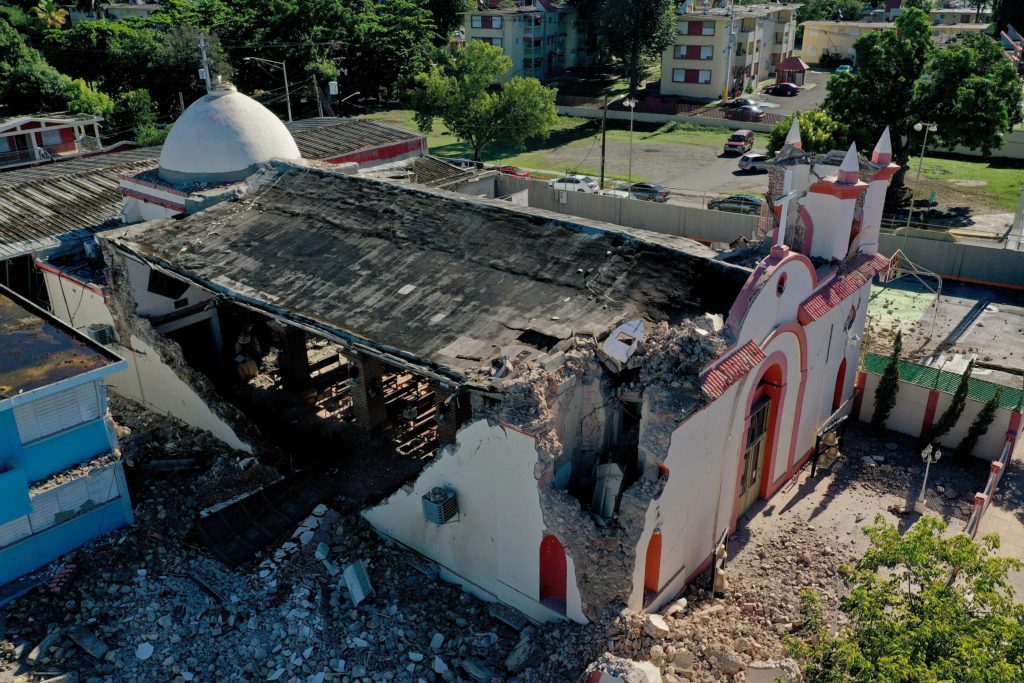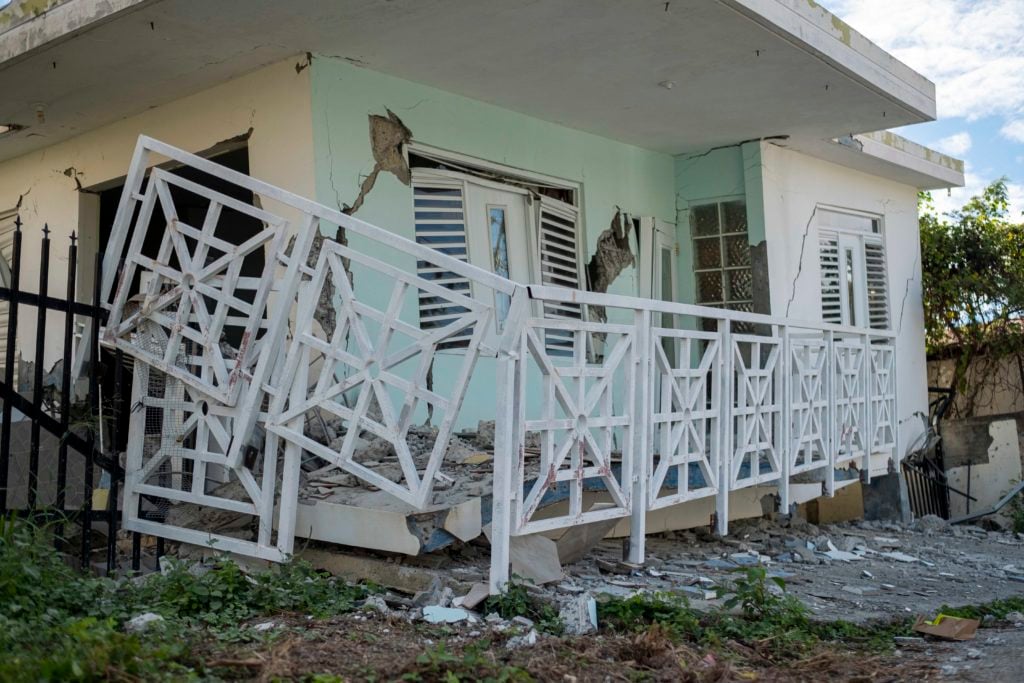Art World
Puerto Rico’s Museums Face Devastating Losses After a Spate of Earthquakes Struck the Island
The island was still rebuilding from Hurricane Maria when this latest disaster struck.

The island was still rebuilding from Hurricane Maria when this latest disaster struck.

Sarah Cascone

Puerto Rico has experienced a series of increasingly strong earthquakes in recent days, culminating in a 6.4 earthquake on Tuesday that triggered a widespread blackout, leveled buildings, and killed at least one person.
In the wake of the destruction, art institutions, too, are shuttering around the island and assessing the damage. The Museo de Arte de Ponce, which is located near the epicenter of the quake, posted on Instagram that it would be “closed until further notice.” It did not respond to inquiries about the extent of damage to the museum or its collection.
The Museo de Arte, which is located in another heavily affected historic district, San Germán, is currently closed because “there is no power in the whole area,” a representative told Artnet News in a Facebook message. “There was damage to some of the collections, especially the ones on the second level, which fell and broke. The structure of the facility suffered some cracks but most of it is in good condition.”
On the other side of the island, a two-hour drive away, the Museo de Arte de Puerto Rico in San Juan announced on Twitter that it would be open for its regular hours today and waiving the entry fee.
The disaster strikes a community still recovering from the wounds inflicted by 2017’s Hurricane Maria. “Blue tarp roofs can still be seen everywhere from the mountains and countryside to communities in the metropolitan areas,” wrote Gretchen Ruiz Ramos, a museum specialist who has been aiding cultural recovery efforts following Maria, in the current issue of Public Art Review. Ahead of the earthquakes, the article warned that the island’s electric infrastructure “remains dangerously fragile.”
In the wake of the earthquakes, Puerto Rican Governor Wanda Vázquez Garced has declared a state of emergency and mobilized the National Guard. President Donald Trump signed an emergency declaration authorizing aid from the Federal Emergency Management Agency.
Recovery efforts following Maria were widely criticized as inadequate, and the effects of the storm were devastating. “Structural damage to historic buildings has affected thousands of collections,” wrote Ramos. “The main hazard in the aftermath of María was loss of electricity. Six months of constant blackouts, the most widespread in American history, saw mold growth caused by high humidity levels and lack of climate control.”

Houses collapsed by a 5.8 earthquake are seen in Guanica, Puerto Rico on January 6, 2020. Photo by Ricardo Arduengo/AFP/Getty Images.
Although Puerto Rico sits on the border of the North American and Caribbean tectonic plates, the recent spate of seismic activity—there have been an estimated 950 quakes, both large and imperceptible, in just the last eight days—comes as a shock. It is the strongest earthquake to hit the island since 1918, and there had not been significant tremors on the island since 1999.
Among the tourist sites affected by the earthquakes are the scenic Punto Ventana, a natural coastal rock formation in Guayanilla named for its window-like appearance. It collapsed during the quake. Also destroyed were the two belltowers of the historic Church of the Immaculate Conception, built in Guayanilla in 1841.
The church’s Father Melvin Díaz Aponte told the New York Times: “We will rebuild.”
UPDATE: “The painting collection of the Museo de Arte de Ponce was not affected during the seismic activity occurred in Puerto Rico in the past days, as well as the almost totality of the rest of our collections,” a museum spokesperson told Artnet News in an email. “After an initial inspection performed by a team of professional engineers, there are no signs of any apparent structural damages to the building. Nevertheless, the institution will remain closed until further notice due to non-structural elements that need to be repaired.”